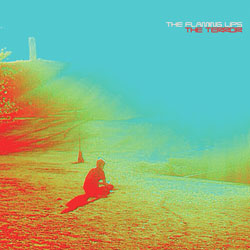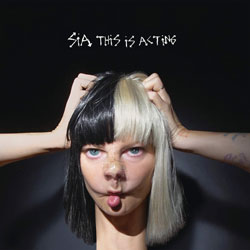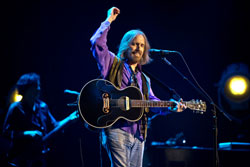From a Hip Priest to dancing buttons, the 31st annual Black Maria Film + Video Festival treated viewers to a fascinating collection of narrative, documentary, animated or experimental short films on March 26 in Pollak Theatre.
Donna Dolphin, associate professor of communication and juror for this year’s festival, welcomed a large crowd. Dolphin added that this festival has been held on campus for 21 years. She continued to say 13 of this year’s 70 films would be screened at the University. Dolphin also mentioned that “Black Maria is a competition and celebration of indie works, some of which are experimental in nature. The work you are about to see is different from what you are accustomed to on TV or when you go to Loew’s.”
Dolphin added the films “can be challenging at times,” and that “Black Maria engages us with the filmmaker to do a little work.” She then introduced John Columbus, founder and director of the Black Maria Film + Video Festival.
Columbus explained Black Maria, located in West Orange, was the first motion picture studio, where inventor Thomas Edison would make short, silent films.
Columbus also discussed the first six films and said Hip Priest was a “labor of love” for director George de Domenico, “who grew up Roman Catholic and wanted to do something on a street preacher.” Colubmus said that for We’re Part of the City: 4th Movement,dealing with Occupy Wall Street, “What happens to the sound is important… think of a sonic artist put in the middle of a protest movement.”
He thanked Dolphin, Chad Dell, Chair of the Department of Communication, the Department itself, and projectionist Steve Mervine.
Before the actual film selections, Edison shorts (The Sneeze, The Kiss and Cops and Robbers),gave viewers time to recognize cinema’s early roots as well as an introductory video.
The festival started with Hip Priest,a narrative film about a cool priest, who strutted down the street like Tony Manero, wore sunglasses and a top hat, and held a bookmarked Bible. Within 27 minutes, director de Domencio established how supportive this priest is by offering his community guidance and keeping a psalm close to his heart. You never felt like there was anything missing or that needed to be further explained.
The documentary Be Filled With the Spiritlooked at storefront churches through Miton Rogovin’s photography. It was interesting to hear from Rogovin about how this assignment turned into a three-year gig as well as information from those knowledgeable on this topic. Plus, the lively gospel music helped bring the photos to life.
Diego Alessandro, a radio/ TV major, said Be Filled with the Spiritwas his favorite film. “ I love gospel music, and…gospel has a connection to the music I love. It’s rap, it’s R&B, it’s soul,” he said.
Everything’s Going to Be Finefelt like a personal documentary about the down turn society is experiencing. Mallory gathered a variety of opinions from scholars to people preparing for anarchy and “cheerios riots.” Mallory offered a lot to think about but included humor here and there to ease the tension.
Although experimental as well as a documentary, We’re Part of the City: 4th Movementwas a street-level perspective of Occupy Wall Street. While the screams of the people turn into the musical track of the film (including a chant that becomes the music’s basic pop beat), it’s not difficult to see this is a recording of events surrounding a modern day movement.
The animated shorts were visually stunning and impressive such as Another Dress, Another Button.Best described as Toy Story if it featured buttons, the animation was smooth as these inanimate objects danced in circles and spirals while their owner was gone.
Places Other People Have Livedmixed live-action mixes with animation to produce a short that had photographs become illustrated memories about director Laura Emel Yilmaz’s childhood house.
There was also Choreography for Plastic Army Men,a delightful and jazzy short consisting of toy army men dancing by filming figures in different positions through stopmotion. It was clever, humorous and made one think, “I didn’t know these toys could dance.”
For the experimental films, Yelp: With Apologies to Alan Ginsberg’s Howl was a humorous and insightful take off of the iconic poem, discussing how technology has changed us.
Burning Star was very odd, consisting of a point-shape that changed color and background. Still, there was something hypnotizing about it.
Columbus said Burning Star’s director, Joshua Glen Solondz was asked by his father, “‘Why don’t you ever make a film people will watch?’ This is what he thinks people will like.” John Walek, a senior attending Black Maria for the first time, said, “I liked [Burning Star],but I didn’t think I would. If you sit and stare at it…it’s pretty amazing.”
Songs for Hellos and Goodbyesfeatured a computerized back-andforth conversation of love and feelings that featured dialogue and greeting card sayings. Filmed in negative footage and using title cards, the boomeranging discussion got more interesting and witty as it continued.
Horizontal Intimacyobserved travelers in an airport as the camera moved along a conveyor belt. The silhouettes were placed against a color palate of black, white and blue, with some red, offered a bleak atmosphere filled with overlapping dialogue and sound. Senior Dan Villanova said this was his favorite film and noticed how it had layers of video. “To think about the time and care someone put in it makes you appreciate it more,” he said.
Cropduster Octet was a striking short that took the crop-duster scene from North by Northwestand cut it up into eight strips running seconds apart.
There was also Curious Light,where a flash light lit “Alice in Wonderland” illustrations, book spines, and pages. While the lighting was interesting, it mainly felt like an intro to a scary TV show. Walek didn’t like the short, saying, “It was scenes of a book and flipping pages. There was no story to it.”
During an intermision, Columbus gave insights into the films and answered questions.
Villanova asked about the selection order and Columbus said, “… Hip Priest and Be Filled With Lightare next to one another because they are opposite ends of the spectrum. You need something to clear the palate.” He added, “Professor Dolphin and I had a conversation and we picked the films shown tonight. I decided on the sequence.”
Another question was, “What goes into picking shorts? Is it quality vs. impact?” Columbus responded, “Are they using the medium well? … Sometimes that means not so good cinematography. It’s also about what else are they doing with the film.”
While discussing the festival, Villanova enjoyed watching films you “don’t see every day,” and Walek said, “It was entertaining and fun. I’m a huge film lover and like movies at different levels of filmmaking. I would like to think in the future, I could be part of this festival.”
When The Outlook asked Columbus how Black Maria has progressed over time, he said it was through technology. He said Black Maria started with celluloid film before moving on to VHS tapes and digital film. Columbus mentioned cameras are “lighter” and people “have more access to equipment” today than years past.
On the films, Columbus said, “I liked all of the movies,” especially Hip Priest, Be Filled With the Spirit, and We Are the People: 4th Movement. “I really like what [We Are the People] did with sound.”
Meanwhile, Dolphin said she enjoyed Hip Priest and Horizontal Intimacy. “I was really looking forward to presenting Hip Priestto our audience. We don’t do a lot narrative at Black Maria. If we do, it has to be edgy or unique in some way, really tackle a current issue or push the technology. I really liked the character, I thought the acting was great, I loved the concept and the ‘Bible’ of the street was a fantastic concept,” Dolphin said.
Dolphin also said that being a juror this year gave the festival a different feel and said, “For one thing, it was easier to program the show. I don’t usually have the luxury of seeing everything before the MU audience does. I see some of the works I choose, but I have to go on my knowledge of the genre, of the filmmaker, or my gut. The difficult part was that I was familiar with all 70 works in the collection and love them all. I only presented 13! Talk about a difficult decision.”
IMAGE TAKEN from kickstarter.com




